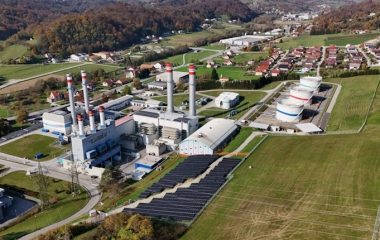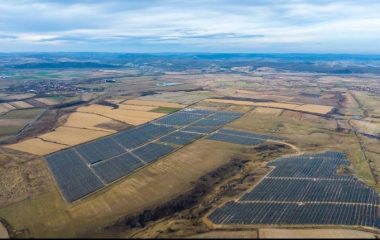
Photo: Nofar Energy / LinkedIn
Israeli company Nofar Energy said its photovoltaic park in northern Serbia of 27 MW in peak capacity began delivering electricity to the grid. The project consists of two adjacent units, Ada1 and Ada2, connected to the distribution grid.
After installing Romania’s largest solar power plant in a partnership, Nofar Energy now operates the largest photovoltaic park in Serbia as well. The Israel-based company, which nine months ago started building it the municipality of Ada in the country’s north, said the facility is online.
Notably, the solar park at the Utrine site consists of two units, Ada1 and Ada2. They have connection points of just under 10 MW each and operate within Serbia’s power distribution network. There is no PV system yet on the Balkan country’s transmission grid.
Project is worth EUR 25 million
The solar park spans 30 hectares on a 116-hectare plot, planned for the solar park’s expansion. Nofar Energy has launched the projects, worth EUR 25 million in total, via its subsidiaries Forest Energy and Energia Solis. The company estimated annual output at 33.2 GWh.
Turkish company Girişim Elektrik is the contractor.
Nofar Energy said its portfolio of operational and projects under construction amounts to 2.4 GW of solar power and 1.2 GWh of energy storage. The company secured an overall EUR 110 million loan in August in Romania for PV plants Ghimpați, which it started building in the meantime, and Iepurești. The two locations in the Iepurești area in Giurgiu county are envisaged for a combined 315 MW in peak capacity.
Serbia planning to add 177 MW in connection capacity through auction mechanism, 1 GW within strategic partnership
The Ministry of Mining and Energy of Serbia said in November that the country hosted 166 MW in solar power capacity. Last month, at its second round of wind and solar power auctions, it allocated the entire PV quota of 124.8 MW in grid connection capacity. The five winning projects are for 176.7 MW overall, also in alternating current or AC. They get contracts for difference (CfDs) and power purchase agreements (PPAs).
A strategic partnership is underway with Hyundai Engineering and UGT Renewables for a group of solar power plants of 1.2 GW in overall peak capacity. It translates to 1 GW in transmission grid terms. The companies are also tasked with installing battery energy storage systems with at least 200 MW in combined capability and a maximum of 400 MWh in capacity.


















Be the first one to comment on this article.